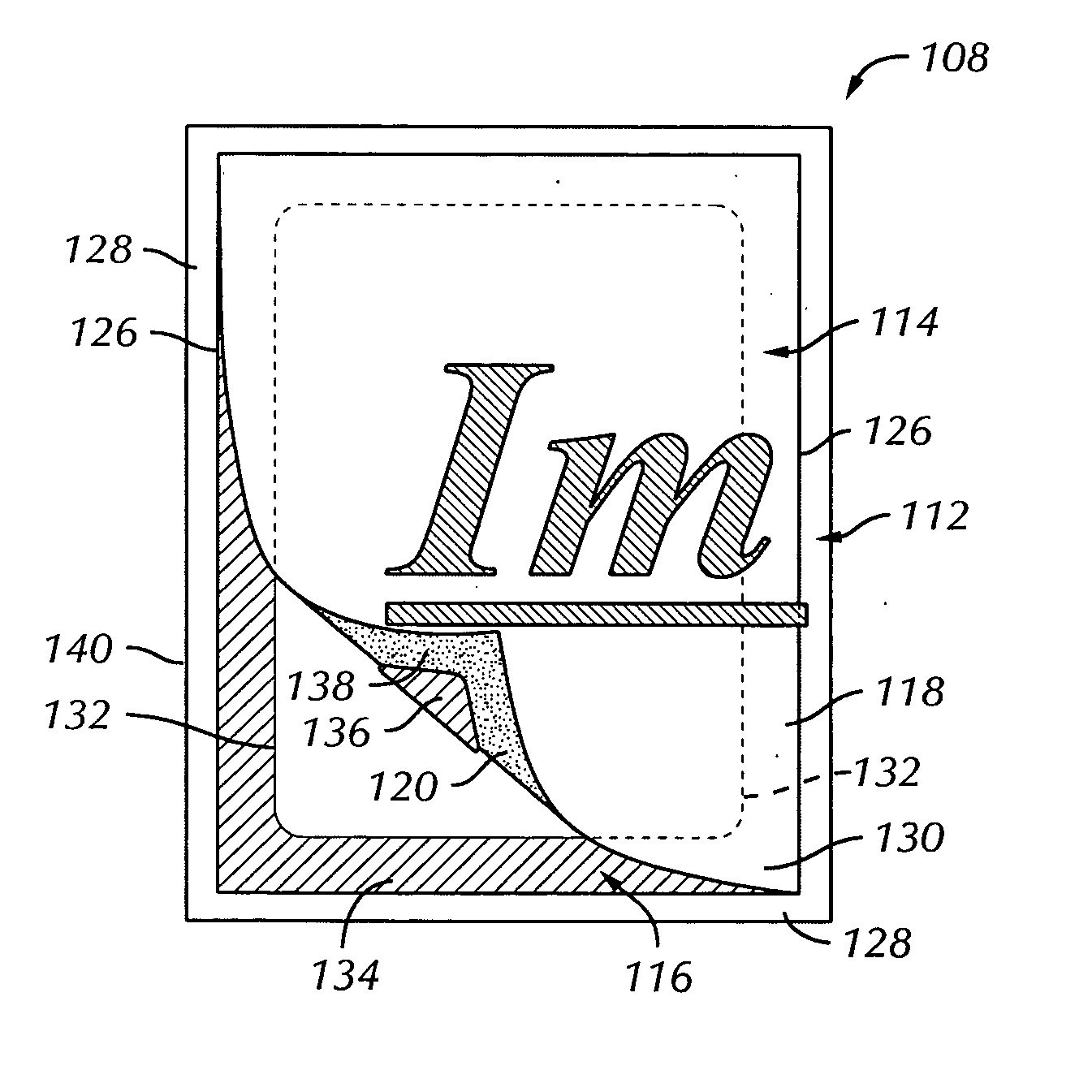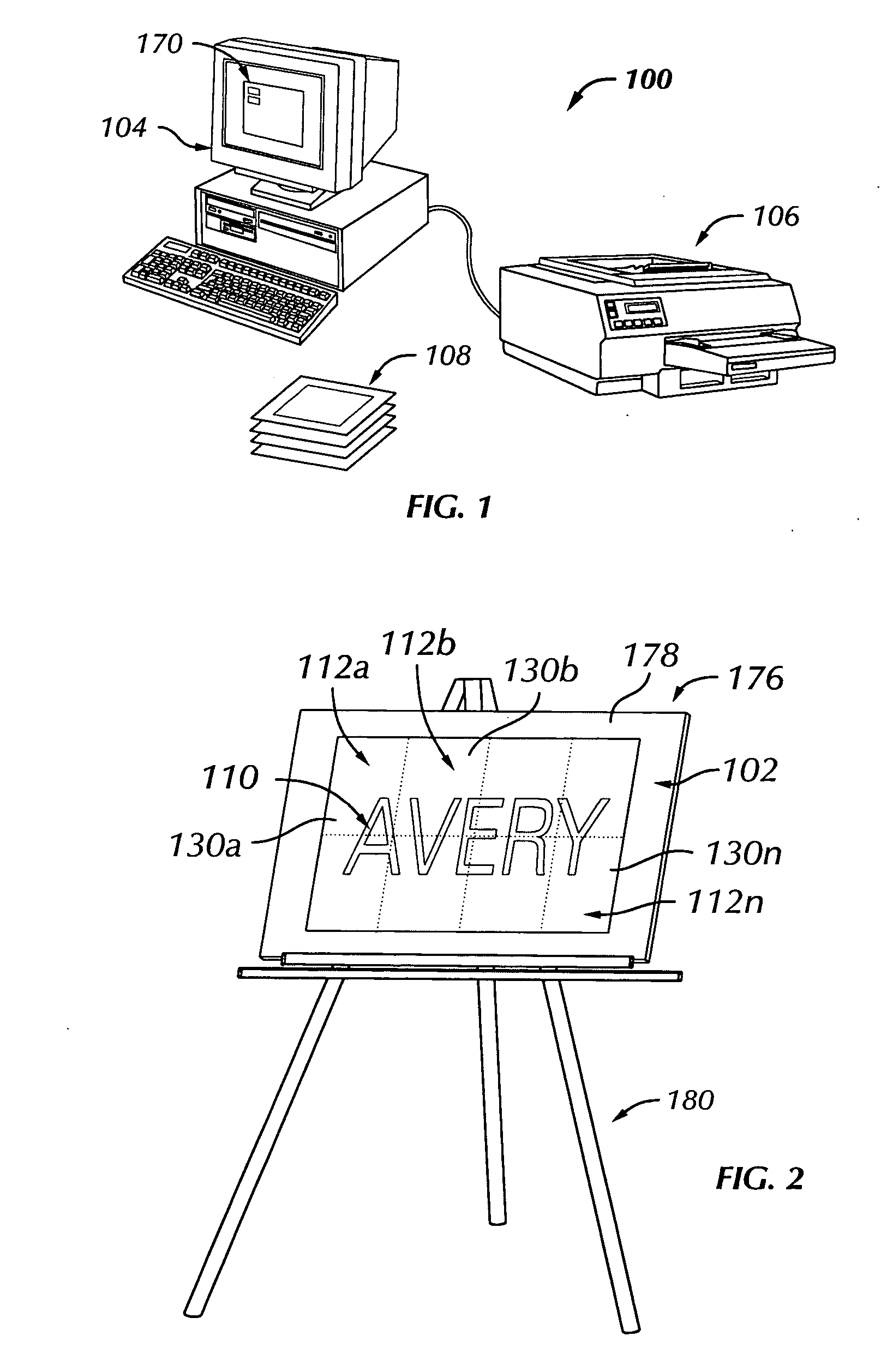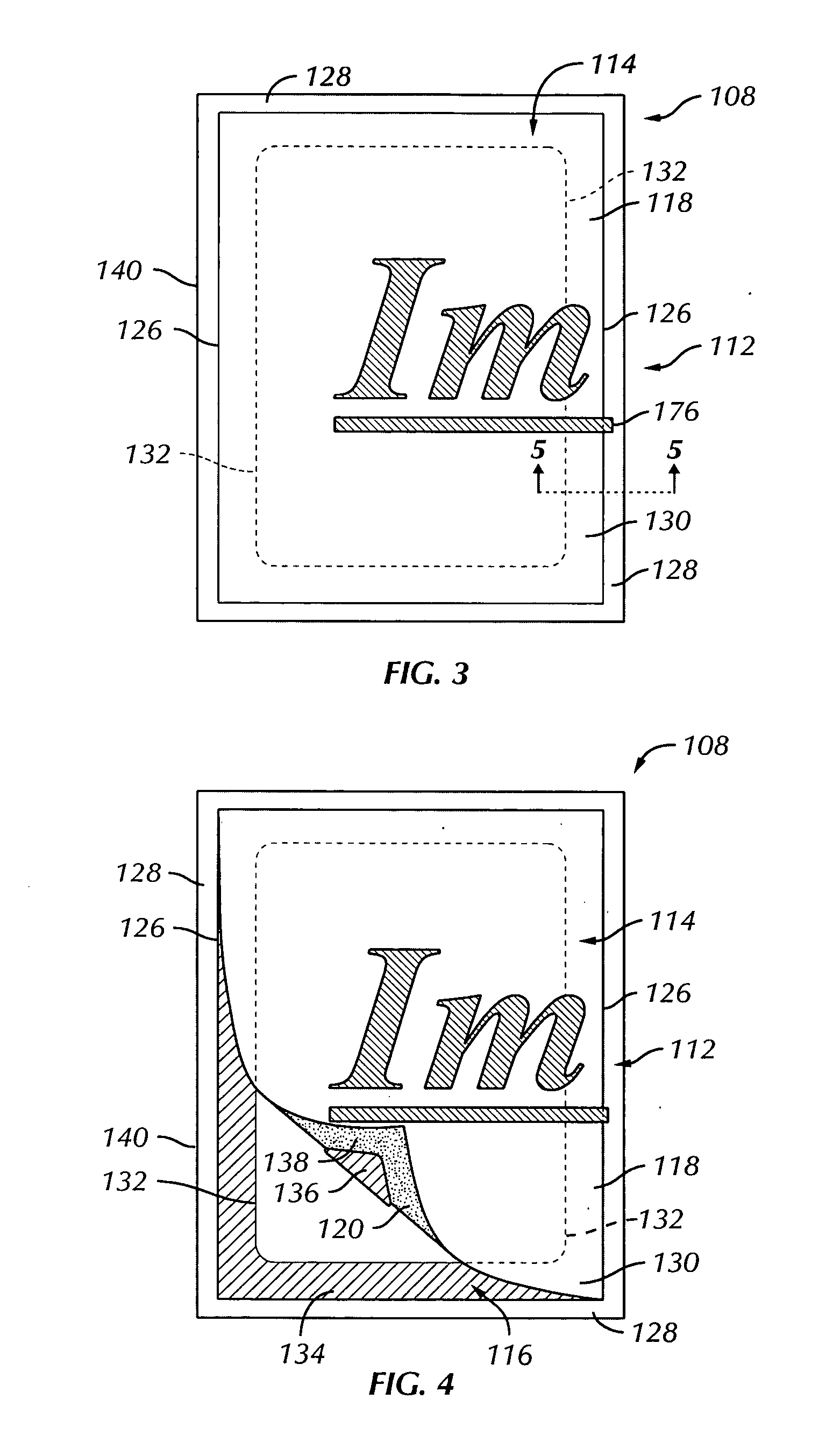Printing stock for use in printing composite signs, methods and apparatus for printing such signs, and methods for manufacturing such printing stock
a composite sign and printing technology, applied in the field of printing stock, can solve the problems of time-consuming test, inability to meet the needs of people, cost and turn-around time that are not acceptable to people,
- Summary
- Abstract
- Description
- Claims
- Application Information
AI Technical Summary
Benefits of technology
Problems solved by technology
Method used
Image
Examples
Embodiment Construction
[0069] Referring more particularly to FIGS. 1 and 2 of the drawings, an improved system 100 for printing a sign 102 may include a computer 104, a printer 106, and a plurality of sheets 108 of printing stock. The system 100 may be utilized when it is desired to print a large sign—that is, a sign larger than a single standard-sized sheet of paper (e.g., A4, 8½×11 inches, or legal size)—with a standard small-office, home-office (SOHO) or home printer such as an inkjet printer or a laser printer.
[0070] For the purposes of this description, the sign 102 includes a printed composite image 110 comprised of a plurality of printed sub-images 112a, 112b, . . . , 112n. The composite image 110 is represented by “AVERY” in FIG. 2, with each of the sub-images 112 including a respective portion of “AVERY”, which will be discussed in detail below.
[0071] Referencing FIGS. 3, 4, and 5, each sheet 108 of printing stock may include a face sheet 114 and a backing sheet 116. The face sheet 114 may incl...
PUM
| Property | Measurement | Unit |
|---|---|---|
| Size | aaaaa | aaaaa |
| Adhesivity | aaaaa | aaaaa |
| Perimeter | aaaaa | aaaaa |
Abstract
Description
Claims
Application Information
 Login to View More
Login to View More - R&D
- Intellectual Property
- Life Sciences
- Materials
- Tech Scout
- Unparalleled Data Quality
- Higher Quality Content
- 60% Fewer Hallucinations
Browse by: Latest US Patents, China's latest patents, Technical Efficacy Thesaurus, Application Domain, Technology Topic, Popular Technical Reports.
© 2025 PatSnap. All rights reserved.Legal|Privacy policy|Modern Slavery Act Transparency Statement|Sitemap|About US| Contact US: help@patsnap.com



